Bury St Edmunds
Station Hill
Bury, in the west of the county of Suffolk, is the
ancient judicial and
administrative centre. The centre of the town has not experienced quite
the radical surgery evident in Ipswich. Several lettering examples
survive.
Just off Station Hill is an old seed mill, still bearing a somewhat
battered
and hard-to-read company sign on the red brick.
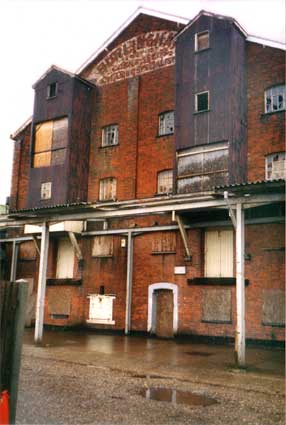 -
-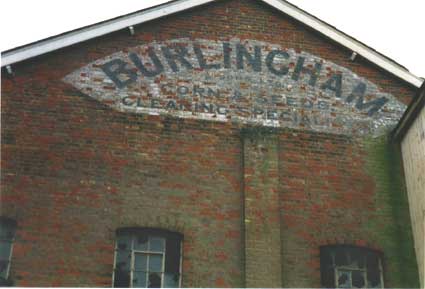 2004 images
2004 images
And around the other side of the building, adjacent to
the rail station
by a very busy (and noisy) stonework depot, a better preserved version
of
the lettering:
'BURLINGHAM
& SONS LTD.
CORN & SEEDS
CLEANING SPECIALISTS'
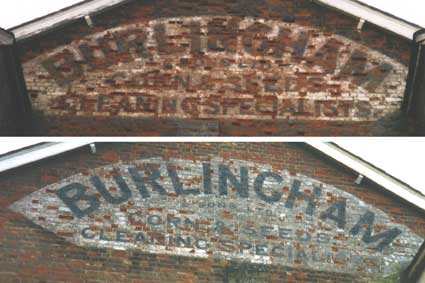
George Burlingham & Sons Ltd are still, in a
different guise, trading in seeds from Ingham, Bury. George Burlingham
(as well as other family members) is mentioned in relation to several
windmills in Norfolk around the mid-19th century.
A hundred yards from the rail station towards the town
centre (and Bury
is similar to many towns in the station being on the outskirts) is an
attractive
little confectionery and floristry shop on the corner of Etna Road. You
can see the rather care-worn municipal steel street sign (with its
corners nipped to form a cartouche) on the corner of the wall. Why
then
did the builder set an unusual stone block sign into the fabric of the
wall
with 'AETNA on one side and 'COTTAGE' on the other? Is there something
he
knew that we don't? Perhaps the use of the dipthong at the start of the
name of that most famous erupting volcano in Sicily was statutory at
the
date of building.
Etna Road
According to Adrian Room’s book Place-names of the World', the
name Etna is said to have originated from a Phoenician word attuna
meaning "furnace." He dismisses the theory that Etna is from Greek
αἴθω = "I burn". In Classical Greek, it is called
Αἴτνη (Aítnē) and Aetna in
Latin. It is also known as
Muncibeddu in Sicilian and Mongibello in Italian (from the Latin mons
and the Arabic gibel, both meaning mountain). Its Arabic name was Ǧabal
al-Nār ("the Mountain of Fire"). In modern history, Etna's most
destructive eruption was in 1669.
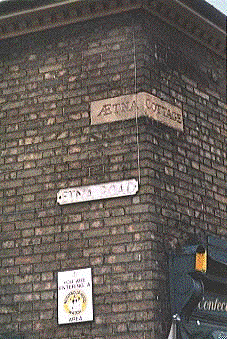
Cannon Place
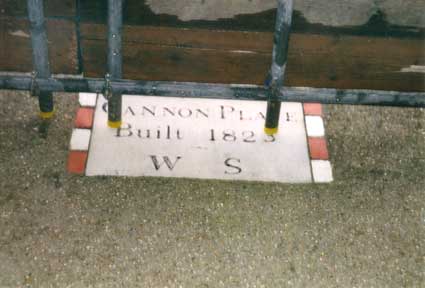
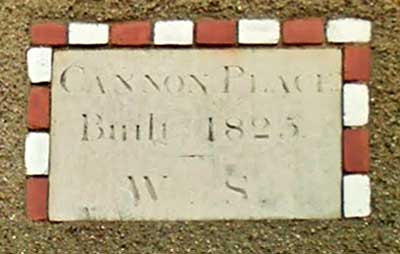
'CANNON PLACE
Built 1823
W S'
This plaque, nearly obscured by scaffold boards, shows
that this is
quite
an old building. This end has recently been used as a restaurant and is
opposite an old brewery in Cannon Street which is now a bar and
restaurant.
The main interest lies in the advertising panel for :
'NESTLÉ'S
MILK
RICHEST
IN
CREAM'
which dominates what once must have been a corner
grocery shop. It
compares
with an advertisement for the same product in
Ipswich. Similarly, someone's tried to obliterate it with an
inappropriately
coloured paint (fortunately unsuccesfully). There is a plaque similar
to
the one shown above, just around the corner in Church Street,
indicating
that the whole building dates to 1823.
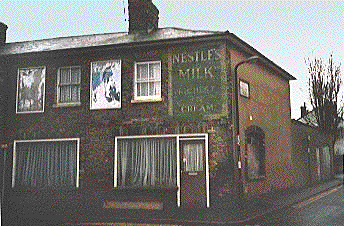 2004 images
2004 images
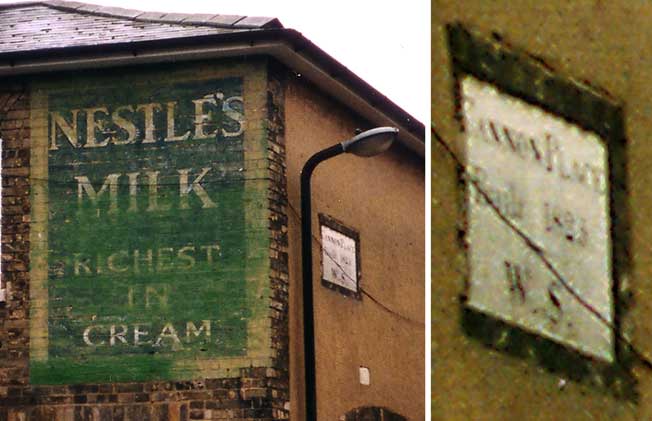
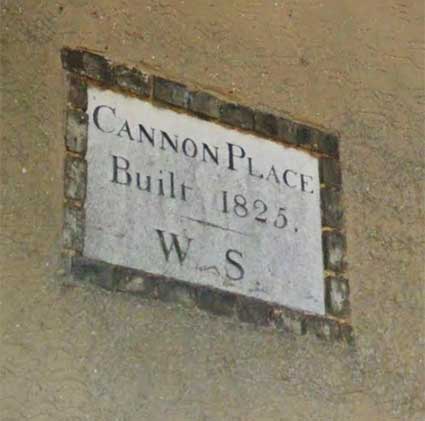
Church Row

Walking up Church Row, a former chapel-like building is seen on
the
right, now two residences, with lettering on the lintel tucked under a
more recent porch:
'LATHBURY
INSTITUTE'

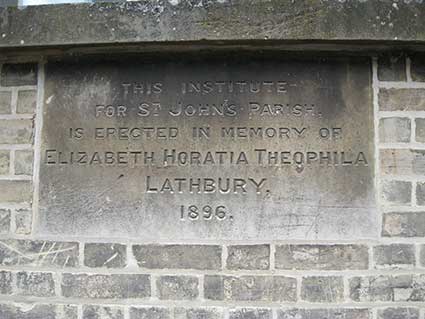 2017 images
2017 images
The tablet below the triple gothic window tells us more:
'THIS INSTITUTE
FOR
ST.
JOHN'S
PARISH,
IS ERECTED IN MEMORY OF
ELIZABETH
HORATIA
THEOPHILA
LATHBURY.
1896.'
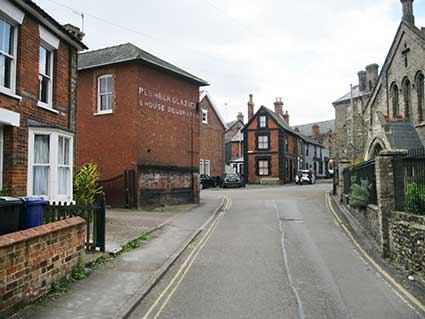
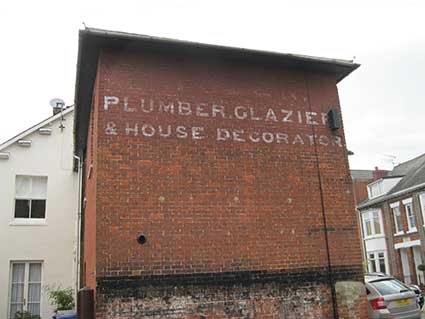 2017 images
2017 images
Further along Church Row is a trade sign painted in
white letters on the redbrick end wall of 9-11 Orchard Street (a former shop:
'SILVER SALON TEL. 763737', once covered by a modern signboard):
'PLUMBER, GLAZIER
& HOUSE DECORATOR.'
Passing the rear of St Johns
Church on the right,
you find a triangular building facing onto St Johns Street bearing the
carved
name plaque:
'ST.
JOHN'S
ANGLE.
1880'

Kings Road
In Kings Road, near to the corner of Prospect Row, lies
the former premises
of:
'HANCHET. MONUMENTAL STONE & MARBLE WORKS.' carved deep into the
sandstone
facing, just under the eves, then stained to stand out 'til today. See
the
detail below.

On the other side of Prospect Row, fronting King
Street, lies Salient Place.
On the end wall of this terrace of cottages is a sign rebaited into the
brickwork. The attempts to obliterate the lettering have been largely
successful,
but 'WRIGHT' seems to be readable.

Cornhill
On Corhill in the centre of town are several
interesting pieces of public lettering. Bury St Edmunds still has a
real Post Office, unlike Ipswich, and to prove it are some fine cast
iron characters painted white against the red brick: 'V.R
. POST . OFFICE . V.R' (with centralised
stops). This attractive font bears comparison to the cast iron
characters of 'V.A. Marriott' in Ipswich.
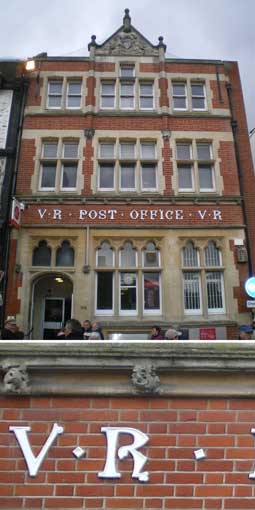
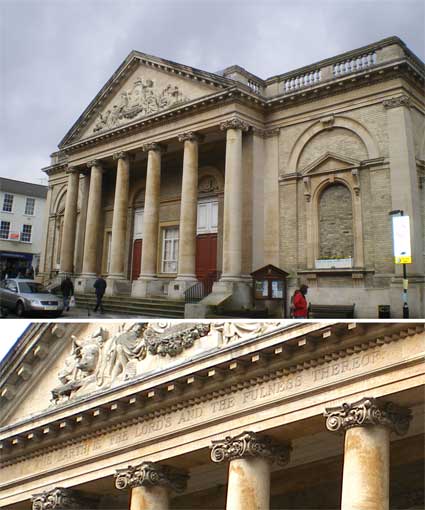
Down the centre of the lower end of Corn Hill are three
fine stone building including the Corn Exchange itself at the end. This
bears the legend:
'THE EARTH IS THE LORD'S AND THE
FULNESS THEREOF.'
And in the centre above it, in a cartouche between gods
of plenty and symbols of harvest (see the beehive to the left), the
profile of Victoria topped by a crown and withe the motto: 'GOD
SAVE THE QUEEN' in relief condensed capitals below.
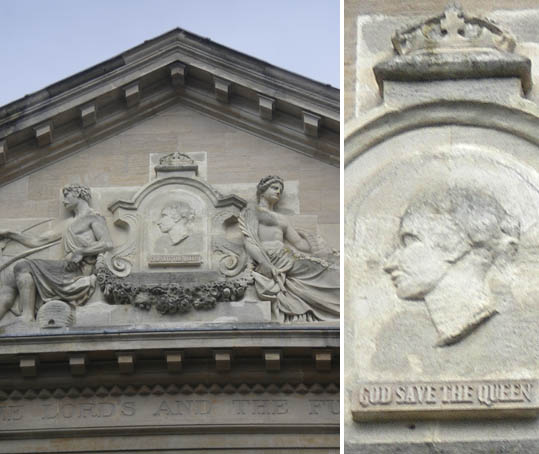
Then there's the former 'FIRE STATION.' prominently signed above the door in chiselled characters.
The building is now commerical premises.
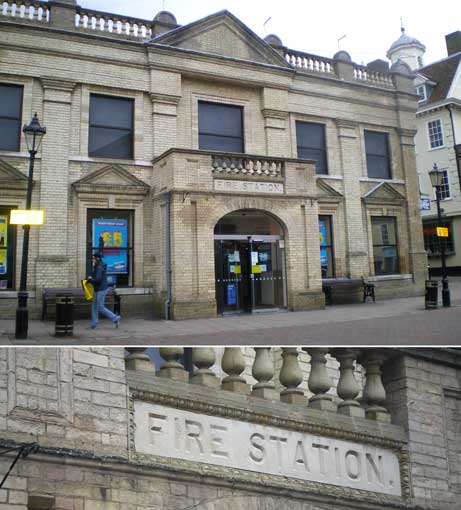
At the top of Corn Hill is the oldest building in
Bury: 'MOYSE'S HALL' in curved chiselled
capitals stained with black paint. For almost a thousand years Moyse's
Hall has looked out over the market place of Bury St Edmunds. It has
seen many changes since it was built in 1180 (the narrower building to
the left in our photograph below; the entrance leads to a Tudor
extension to the original house) and has had a variety of different
uses, including a tavern and a 'gaol'. It is a rare and important
example of Norman domestic architecture. To the left of Moyse's Hall is
now a shop which was converted from an inn called The Castle. The
left-hand part of Moyse's Hall formed part of this inn for many years.
Currently it's a museum which provides an excellent setting in which to
trace the unfolding story of West Suffolk, through displays which range
from prehistoric times right through to the present. Moyse's Hall's own
story is as rich and varied as the collections which it houses. Sadly,
the view when we visited in a wet February 2010 was marred by plastic
barriers, tape and cones.
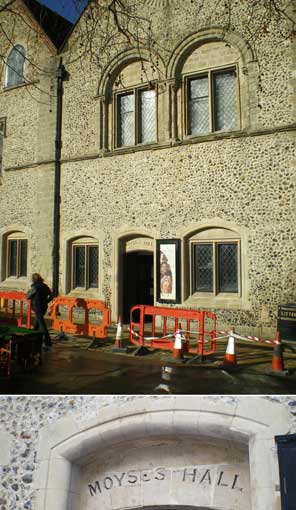
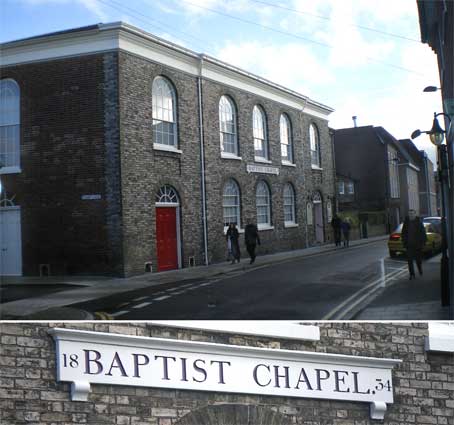
Pump Lane
The 'BAPTIST CHAPEL.' on the corner of Pump Lane is prominently
named
on an attractive and well preserved stone panel with bevelled top and
curved supports. The date '18 ... 34' surrounds the name. Directly
opposite is small ecclesiatical-looking building which bears the tablet
shown:
'THIS MEMORIAL STONE
WAS LAID ON
SEPTEMBER 8TH 1892, BY
JAMES STIFF,
(OF LAMBETH LONDON)
WHO ENTERED THIS SUNDAY SCHOOL
AS A SCHOLAR AT ITS FORMATION
IN 1824.
----
J.E. SEARS F.R.I.BA.
ARCHITECT.
J. WILLIAMS.
BUILDER.'
St Andrews
Street North
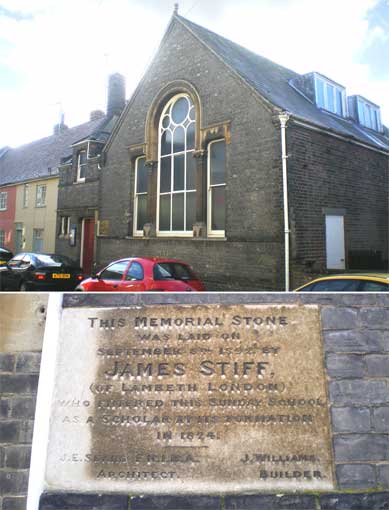
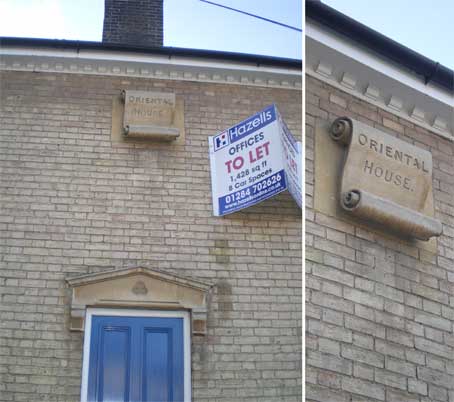
And in St Andrews
Street North - not far from the bus station and library - we find the
'ORIENTAL HOUSE.'
(up for sale when we saw it). Quite
why this modest house built in Suffolk whites bears such a grand, deep,
stone scroll sign, we don't know.
Angel Hill
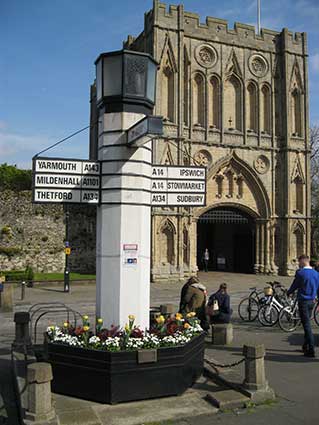 2017 image
2017 image
With the Abbey Gate in the
background, Angel Hill boasts this curious example of street furniture:
half-lighthouse, half-signpost, with a bit of planter thrown in. The
arm pointing towards the camera indicates Abbeygate Street and is
labelled in red 'NO ENTRY'. The octagonal post is stencilled 'F418',
'F419', 'F420' and 'F421' on the cardinal points.
'F418' points towards the ancient gateway, as does a spotlight inside
the lantern. The glazed road signs, which are supported by metal
trusses, read:
'IPSWICH A14
A143 YARMOUTH
STOWMARKET A14
A1101 MILDENHALL
SUDBURY A134
A134 THETFORD'
Home
Return to Historic Lettering from outside
Ipswich
Please email any comments and contributions by clicking here.
Search Ipswich
Historic Lettering
©2004 Copyright
throughout the Ipswich
Historic Lettering
website: Borin Van Loon
No reproduction of text or images without express
written permission

 2017 images
2017 images
 2017 images
2017 images -
- 2004 images
2004 images



 2004 images
2004 images



 2017 images
2017 images
 2017 images
2017 images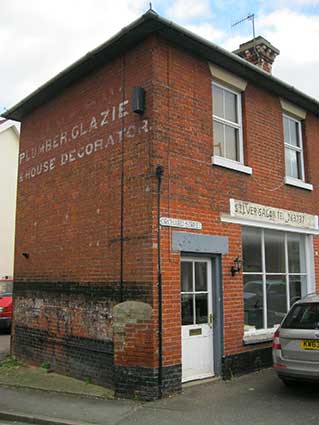











 2017 image
2017 image